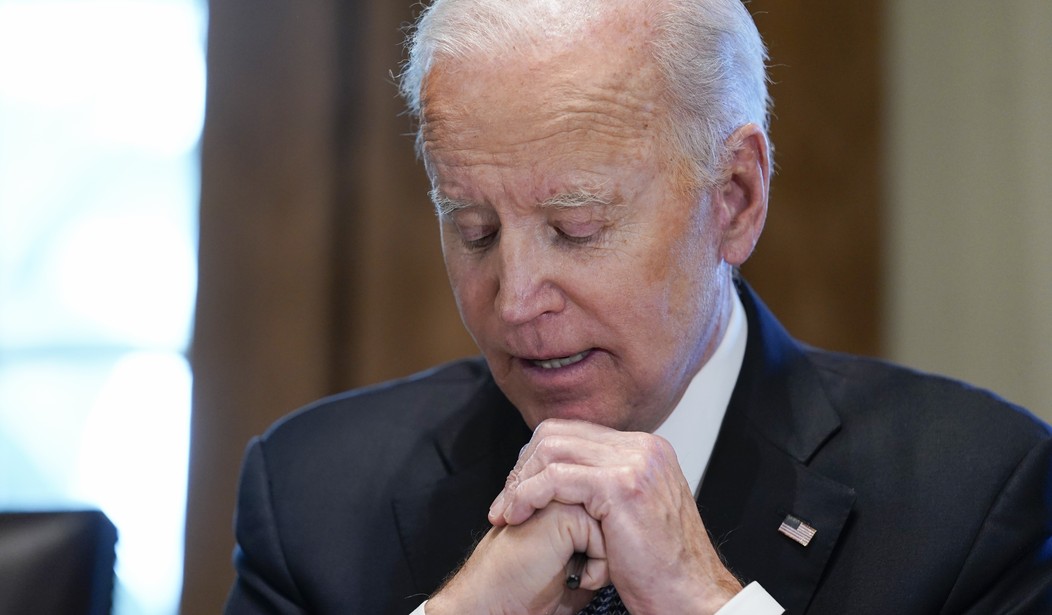The recently revised Q1 report on the US economy may prove less of an outlier than first thought. Separate reports over the last two days show economic confidence draining from both consumers and producers as inflation saps buying power, especially among lower-income Americans. Washington Post economic analyst Heather Long calls that phenomenon the return of the “have/have-not economy”:
Pessimism abounds about the U.S. economy. Wall Street executives, normally an upbeat bunch, are warning of a “very, very high risk” of recession, as Goldman Sachs’s Lloyd Blankfein recently put it. The head of Wells Fargo says there is “no question” the nation is heading toward a downturn. The stock market has veered dangerously close to a bear market. Top business leaders are as gloomy as they were at the start of the pandemic. Consumers are even more downbeat. Americans rate the economy as badly as they did the Great Recession, largely because of inflation at 40-year highs.
It is easy to explain what could tank the economy in the not-too-distant future. To fight inflation, the Federal Reserve is hiking interest rates, and when the Fed starts pumping the brakes, a recession often follows. Russia war’s in Ukraine, ongoing supply-chain crunches, covid-19 flare-ups and the end of $5 trillion in federal pandemic aid all add strain to an already jittery situation.
Less clear-cut is how to save the country from recession when the United States appears to be returning to a have/have-not economy.
The most straightforward path to avoid a recession is for Americans to keep spending. Voters might not like today’s economy and high prices, but they have boosted their spending every month this year. Luxury brands and stores such as Nordstrom that cater to higher-end shoppers are doing especially well. So is anything related to travel: Flights, hotels and destinations such as Disney theme parks are thriving in what’s been dubbed the summer of “revenge travel.” Even some cruise lines are reporting record bookings.
But how dependable is consumer spending? The latest Q1 report from the Bureau of Economic Analysis still showed a -1.5% annualized GDP, the first contraction since the recovery from the pandemic recession in 2020Q2. That appears mainly caused by a sharp drop in exports (-5.4%) from the previous quarter’s 22.4% increase, combined up with an 18.3% increase in imports. Consumer spending (PCE) remained relatively decent if not spectacular at 3.1% growth, following two quarters of <3% PCE growth following the two stimulus bills passed in December 2020 and March 2021, neither of which has had lasting effect on consumer spending.
The question will be whether consumer spending will contract as inflation bites further into the have-not population in Long’s construct. One possible answer comes from Gallup, which now puts consumer confidence at its lowest level since the 2008-9 financial crisis:
Gallup’s Economic Confidence Index measured -45 in May, down from -39 in each of the previous two months. It is the lowest reading in Gallup’s trend during the coronavirus pandemic, and likely the lowest confidence has been since the tail end of the Great Recession in early 2009. …
Currently, 14% of U.S. adults rate economic conditions as either “excellent” or “good,” while 46% say they are “poor,” with another 39% rating them as “only fair.” The Confidence Index takes into account the net of excellent and good versus poor responses, which is -32 this month. In April, 20% of Americans rated the economy positively and 42% said it was poor, a net of -22.
Meanwhile, 20% of Americans say the economy is getting better and 77% say it is getting worse, essentially the same as in April and March.
The percentage of Americans rating the economy “good” or “excellent” has declined in two months by eight points (22% in March). The combined score for “fair” and “poor” has increased in the same period by six points (79% to 85%). And the reason for this is highly tied to inflation, which 18% of Americans now point out as the biggest issue facing the US other than poor leadership (19%), neither of which reflects well on Joe Biden or Democrats.
If you think 18% sounds too low for the current environment, remember that respondents only got one choice, and that another 12% chose the economy more generally. Abortion only got 5%, for instance, even with the recent leak of the Dobbs draft that signaled an end to Roe. Also, consider the historical anomaly of that level of concern in this series:

This level of concern over inflation and erosion of buying power will likely have a depressing effect on consumption — if not in Q2, then soon. The high price of gas will likely also depress summer travel, as I noted earlier today. That will mean a drop in PCE and could mean a traditionally defined recession as early as late September, when midterm early voting starts, regardless of what the Federal Reserve does. And the Fed is not going to stand on the sidelines:
Top Federal Reserve official Christopher Waller expressed support for more aggressive rate hikes from the country’s central bank in an effort to tame inflation.
Waller also said he believes further rate hikes won’t cause a jump in the US unemployment rate in a Monday speech at the Institute for Monetary and Financial Stability in Frankfurt, Germany.
Waller, a Fed governor, said he’s in favor of “several” additional half a percentage point — or 50 basis point — increases in the Federal Reserve’s policy rate until he sees “inflation coming down closer to our 2 percent target.”
Until we get the drivers of inflation under control, especially American oil production and refining capacity sharply increased, we are heading back to the economy of the 1970s. And with much less room in monetary policy to guide it, too.
Update: I meant to write that we had experienced less than 3% PCE growth in the previous two quarters, but I used the wrong operator. I have fixed it now.








Join the conversation as a VIP Member